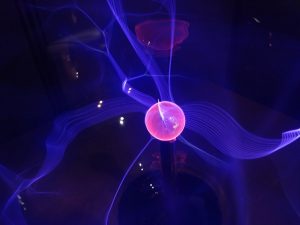
The other day, I had an interesting conversation with physicist Dr. Meir Shimon. He said that while it’s been known for a long time that matter consists of particles, such as electrons, protons, and neutrons, until the development of quantum theory, it was not known that forces, too, come and bits, called “quanta” (pl. for quantum). When I asked how can something not be divided into bits, Dr. Shimon replied that physics is an empirical science, and there was no empirical evidence that forces, too, come in quanta.
The conversation was very interesting, but it also highlighted the limitations of science. Science, as Dr. Shimon stressed later in the conversation, deals with revealing laws, but never asks about the reason for the existence of the laws.
Precisely here is where the wisdom of Kabbalah fills the void. Kabbalah deals not only with how things happen, but first and foremost with why they happen. For this reason, Kabbalah sees very clearly why energy comes in quanta, and it has to do not with the light, the force, but with our perception of it.
Kabbalah explains that we cannot perceive anything unless it stands out on a background that’s markedly different from it. We cannot perceive something if it’s always there, unchanging. Therefore, to detect the existence of anything, we must also detect its opposite, or at least changes in the presence of the thing detected. Whenever something manifests, it does so on the backdrop of its opposite. This is why everything in our perceived universe is divided into quanta, bits, levels.
The wisdom of Kabbalah opens up to us the forces that set in motion everything that we perceive with our physical senses. While science deals with what we perceive, Kabbalah deals first of all with why we perceive what we perceive, how we can change the way we perceive, and then talks about what we perceive if we change our qualities, our senses. At the very root of reality, the wisdom of Kabbalah has found that there are no forces, but rather dispositions, tendencies. Here, too, they are opposite: a tendency to give, and a tendency to receive, simply, egoism and altruism. When these opposites interact, they manifest as intermittent giving and receiving, which is why everything we see seems intermittently present and absent, light or dark, warm or cold, and so forth.
In truth, however, there is none of that. All that exists are the two dispositions that create forces, matter, and everything that happens between them.